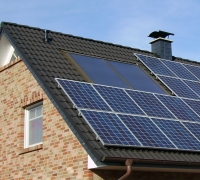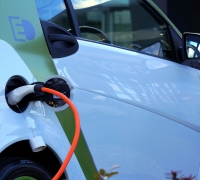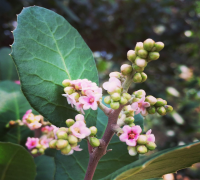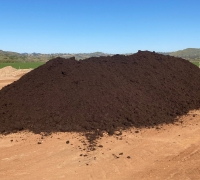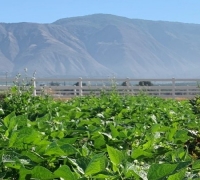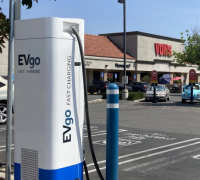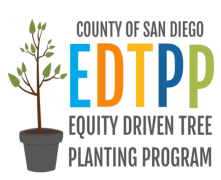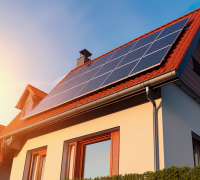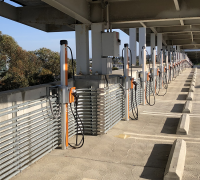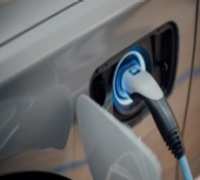CURRENT PROJECTS
2024 Climate Action Plan
On September 11, 2024, the County Board adopted the 2024 Climate Action Plan (CAP) to implement bold climate actions that reduce greenhouse gas emissions and put the County on a path to reach net-zero emissions by 2045. The CAP outlines nine strategies, 21 measures, and 70 actions across five sectors—Built Environment & Transportation, Energy, Solid Waste, Water & Wastewater, and Agriculture & Conservation.
Climate Action Progress Annual Reporting
The Climate Action Progress Annual Report outlines the County's annual achievements in implementing the CAP to reduce greenhouse gas emissions from both County operations and the unincorporated area. From 2018 to 2024, the County implemented the 2018 CAP. Starting in 2025, the County will transition to implementing the 2024 CAP. Regular monitoring ensures the County can effectively track the performance of CAP strategies and measures.
San Diego County Native Landscape Program
The Native Landscape Program is a groundbreaking initiative to promote the use of native plants in landscaping across the region, supporting biodiversity, habitat preservation, water conservation, climate resilience, and local market development. This multi-year program focuses on education and incentives to encourage native plant use in private developments and showcases their benefits at County facilities.
Sustainable Operations in Land Stewardship Program
The Sustainable Operations in Land Stewardship (SOILS) Program is at the forefront of the County’s push to combat climate change by incentivizing climate-smart land practices—like compost application, hedgerow planting, and cover cropping—that not only reduce greenhouse gas emissions but also sequester carbon. These nature-based solutions, grounded in regenerative agriculture, enhance soil health, boost biodiversity, and improve water retention. Stay updated for resources and opportunities to participate.
Sustainable Agricultural Lands Conservation 2.0 Project
The Sustainable Agricultural Lands Conservation 2.0 (SALC 2.0) Project is driving a bold effort to support farmers within the county and protect the region’s vital agricultural lands. This initiative combines cutting-edge market research and strategic planning to empower farmers, tackle market disparities, and curb the premature loss of farmland.
Building Energy Efficiency and Electrification
The CAP includes several actions in the Energy and Built Environment and Transportation sectors to help transition our communities away from fossil fuels and toward the efficient use of clean and renewable energy sources. By promoting green buildings and cleaner energy use, we can design and construct homes and businesses to be more resilient while being cost effective and improve air quality and public health. Learn more about the Building Energy Efficiency and Electrification efforts under the CAP.
Do-It-Yourself Sustainability Toolkit Pilot Program
The Do-It-Yourself Sustainability Toolkit Pilot Program is loaning toolkits at no cost to unincorporated residents to help save energy and water. Participants will gain hands-on knowledge about how much energy and water their household uses and discover simple ways to cut back, potentially lower their utility bills, and live more sustainably. Each toolkit includes tools, along with a step-by-step guide and a tote bag with free giveaways to keep, including LED lightbulbs, weatherstripping, and a low-flow showerhead (while supplies last).
Public Electric Vehicle Charger Incentive Pilot Program
The Public Electric Vehicle Charger Incentive Pilot Program is a new initiative in development to support the installation of publicly available electric vehicle (EV) chargers on private property in the unincorporated area. The program will offer financial incentives to increase access to publicly available EV charging in everyday locations like retail centers and apartment complexes. With a strong focus on equity, the program prioritizes communities that have historically lacked access to EV infrastructure.
Equity-Driven Tree Planting Program
The Equity-Driven Tree Planting Program (EDTPP) addresses tree canopy inequities in underserved communities, as well as enhances resilience to climate change through increased shade, improved air quality, and better neighborhood walkability. The EDTPP includes tree giveaways for private property, community education and engagement, workforce development, and expansion of County tree planting efforts outside of the Comprehensive Tree Planting Program.
San Diego Solar Equity Program – County Pilot
The San Diego Solar Equity Program – County Pilot will increase the number of low- to moderate-income households in the unincorporated area with rooftop solar PV systems at no cost. The pilot program will provide qualifying homeowners, especially residents in vulnerable communities, with financial assistance to install solar PV systems, making rooftop solar more accessible. This pilot is administered by the Center for Sustainable Energy. For further information on how to apply, please visit the program page.
RELATED PROGRAMS
Electric Vehicle Roadmap
The County is advancing the implementation of its Electric Vehicle (EV) Roadmap, which outlines strategies to increase zero-emission vehicles on the road, expand charging infrastructure, and promote clean mobility, reducing greenhouse gas emissions, improving air quality, and lowering transportation costs.
Clean Mobility Options Voucher Pilot Program
In 2021, the County partnered with the La Presa neighborhood in Spring Valley to conduct a Community Transportation Needs Assessment, working directly with residents to understand their travel challenges. This effort identified opportunities for clean mobility solutions that can improve access within the community while providing environmental benefits such as better air quality and reduced greenhouse gas emissions.




